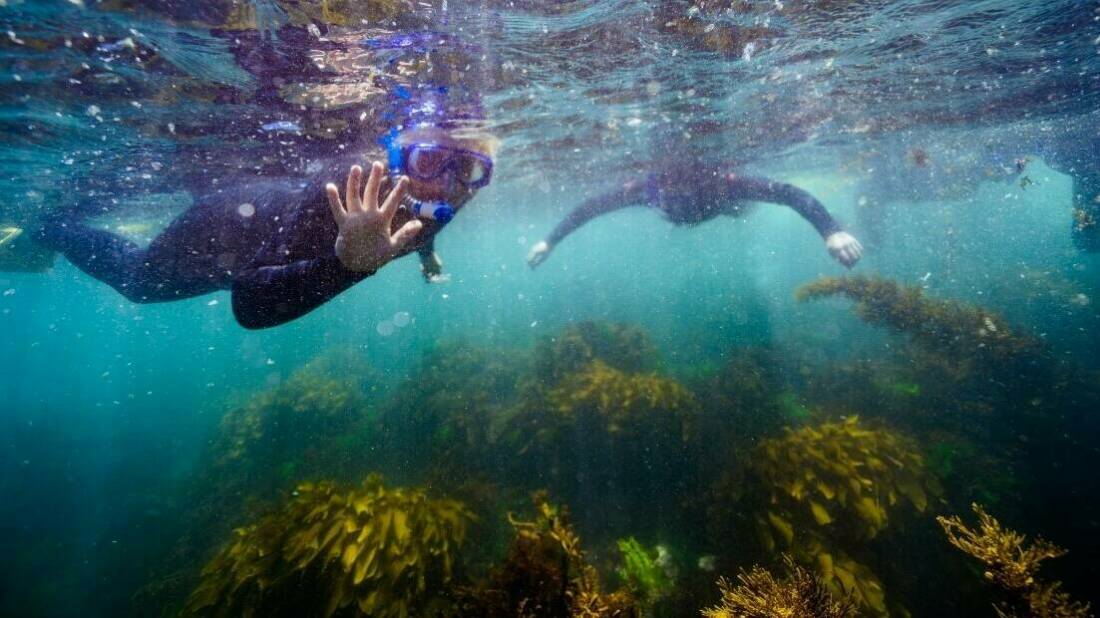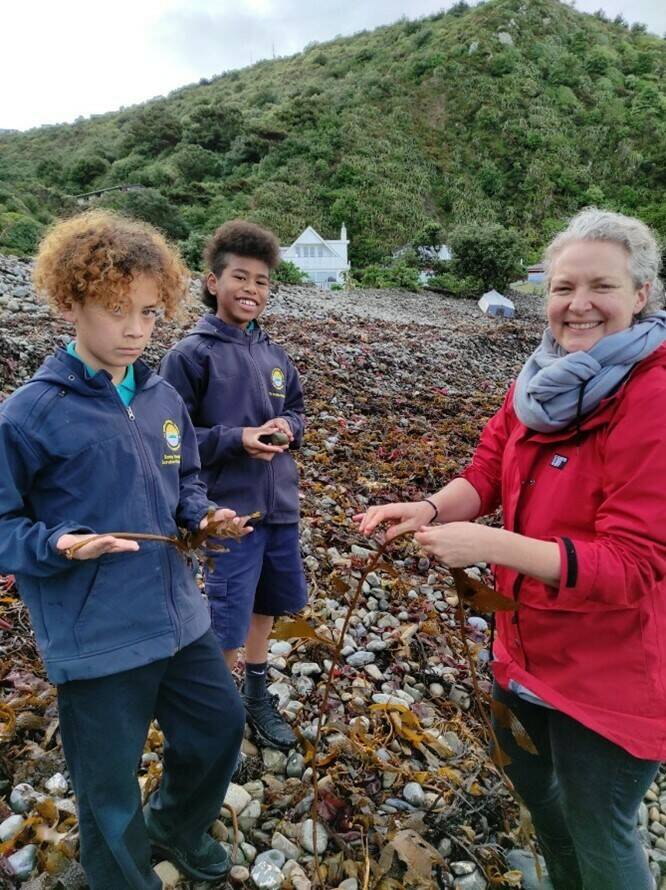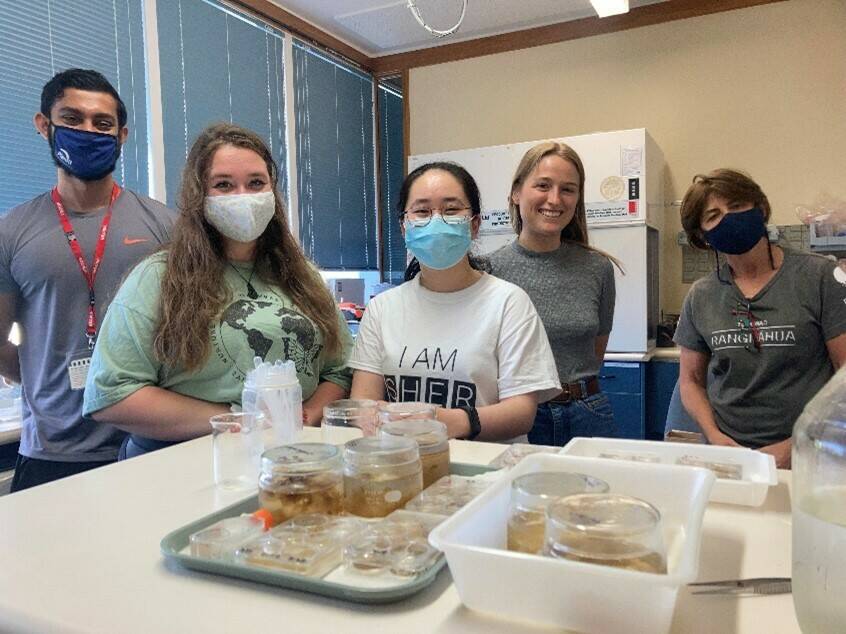Love Rimurimu: Our Underwater forests

Our underwater forests
If you were to picture a forest what do you imagine? Maybe a great expanse of native bush or perhaps a dense jungle. Regardless of what sort of forest you see, it is likely terrestrial.
Although it is widely known that our terrestrial forest’s help produce most of the oxygen we breathe, this information is not entirely accurate. There is an unsung hero floating in the deep, one that supports primary production in our marine ecosystems, helps in the fight against climate change and produces oxygen. It’s the humble seaweed. In fact, most of the world’s oxygen (between 70% and 90%) comes from seaweeds and other microscopic algae.
Wellington’s harbour was once home to an abundance of seaweed forests but due to a number of environmental stressors including the impacts of climate change, the seaweed forest cover in the area is in decline.
Mountains to Sea Wellington Trust is an organisation that delivers freshwater and marine education and restoration programmes for schools and communities across the Greater Wellington Region.
Inspired by the idea to restore these seaweed forests, Mountains to Sea launched the Love Rimurimu programme in 2020. Their vision focusses on educating communities to develop a deeper understanding and appreciation of the importance of seaweed and how it is vital to the function of our marine environment. In the long term, the goal is that community collaboration will help pilot seaweed forest restoration in Wellington and improve the quality of the marine ecosystem.
In a recent interview Executive Director Zoe Studd spoke about how the Trust began and what their plans are for the future.
How it all began

“The Taputeranga marine reserve was founded in 2008, and we began delivering the national Experiencing Marine Reserves programme the very same year. Fast forward a decade and MTSW is now an independent trust delivering national freshwater and marine programmes across the region. Our goal is to inspire kaitiakitanga (guardianship) for our rivers, harbours and coasts and to empower communities with the knowledge and support they need to take action.”
"Seaweed came onto our radar in a big way through collaborations with Nicole Miller who was running a citizen science project called Project Baseline which worked with volunteer divers and drone footage to monitor the extent of seaweed cover in Wellington. The news wasn’t promising, declining cover, marine heat waves and kina barrens were evident and on-going problems.”
“We wanted to start encouraging people to think of the seaweed forests the same way we think of our forests on land. They are our underwater forests, and they are declining, but they are out of sight and out of mind for many, so we were really motivated to find ways to connect more people with them.”
“When we initiated the education programme in 2020, we used the Experiencing Marine Reserves programme’s tool-kit; with lots of field trips, snorkels and class sessions to immerse the students in experiences to build understanding.”
Who we work with
One of the special aspects of how the programme is run is the diversity of people and groups involved, and the interweaving of Mātauranga Māori knowledge and expertise with western science to enhance outcomes.
“The programme ran the whole year and involved lots of other scientists and collaborators who worked with the students. We also collaborated closely with Te Aho Tu Roa, a kaupapa Māori organisation who worked alongside us with full-immersion kura kaupapa Māori (schools). Te Aho Tu Roa developed a whole host of te reo Māori and te ao Māori content which has been invaluable in building understanding of the past state of the environment and the relationships between people and the ocean.”
Our Seaweed Restoration Project

2022 is a big year for the team at Love Rimurimu as they work to get the restoration project underway.
“This year we’re focused on getting the Love Rimurimu Restoration project underway. There’s a lot to learn about how to grow seaweed and how to restore areas where it was once abundant.
Students from the education programme are also involved, putting forward their ideas about species and locations to begin with. Cultural knowledge and mātauranga is woven into understanding where restoration sites can be.”
“Macrocystis pyrifera is likely to be our initial species of interest. Researchers at NIWA have been collecting spores and building up our ‘spore bank’ so that we can explore ideal growth conditions and other trials. We picked Macrocystis (giant kelp) as it is at its northern most extent in Wellington and it’s at risk and in decline. Warmer waters will affect its distribution as it will start moving southwards into cooler waters, but it’s a really important ecosystem builder here so we don’t want to see it disappear from the Wellington coastline.”
“Giant kelp also grows incredibly fast, so if we have success with it then we can achieve quite a lot of restoration quite quickly. We thought as a starting species it’s a good place to begin because it is vulnerable to climate change, it’s got incredible potential ecologically, but it also has some innovation opportunities attached to it, so it is kind of serving the interests and needs of a number of different partners in the project. We are hoping to have a reasonable level of success with it to start with.”
“Our ultimate aim is to get four restoration sites established inside the harbour and to develop a toolkit that other regions and organisations looking into restoration can utilize as well. We hold collaboration at the centre of the project, and we want the knowledge we build to be available for others to use.”
How to get involved

“There’s a lot of opportunities for people to be involved to help people to fall in love with these seaweed forests. I think one of our primary challenges is that people don’t know what’s down there. If they don’t know how beautiful it is how can they be expected to care for it? And that is why the education and the community components are really important.”
“If people want to take part they can go to our website and sign up to be a part of the Love Rimurimu community which is where we are keeping people up to date. Very shortly there will be a campaign to help us raise funds for our nursery. People can also volunteer at or join in with our community snorkels to experience the seaweed forests for themselves.”
If you are interested in being a part of the Love Rimurimu community visit https://www.loverimurimu.org/ to find out more.
